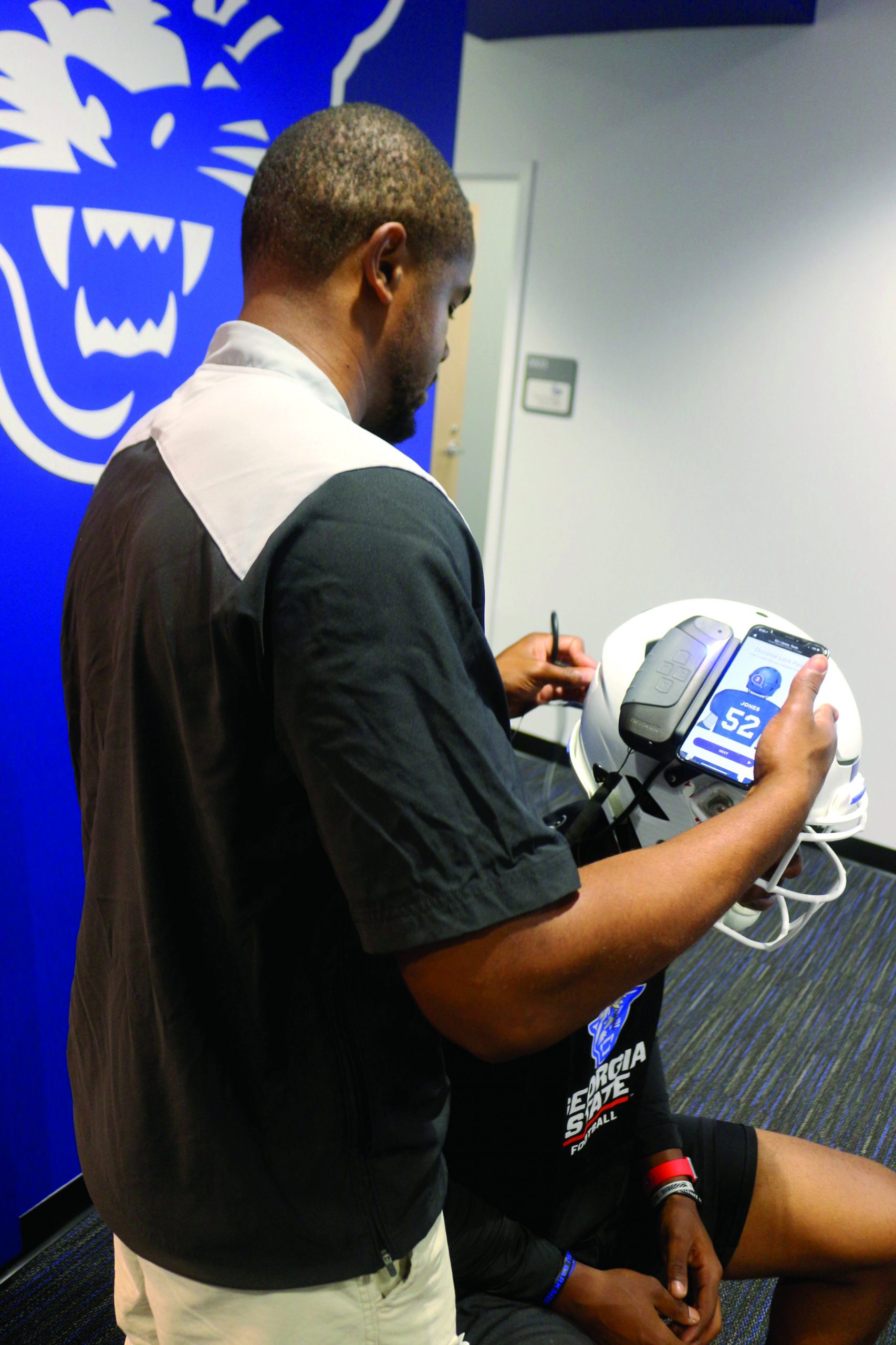
When the Georgia State football team takes the field this season, you may not notice anything new about the player’s helmets on the outside, but on the inside, a new fitting technology may help limit the number of head injuries the players will inevitably face.
Head equipment manager Nate Simon has been busy this off-season. Each helmet the football team uses, including the helmets worn throughout this summer’s training camps, now function with the help of HelmetFit. The equipment team has been able to test the software over the summer.
“We fitted all of our [training camp helmets] with the tech,” Simon said. “We have had far less complaints about the fitting than we have had in the past.”
Concussions have rapidly become one of the most critical issues the sport faces across all age and skill levels. This is an issue all programs actively try to improve.
“Concussions are the biggest problem in football,” Simon said. “No helmet will keep a player completely safe, but it is our job to help increase player safety.”
This is where HelmetFit comes into play. The company was founded by Mike Weatherby, a former football player who had his fair share of head injuries during his playing career. His technology is designed to decrease the amount of time needed to fit a helmet, provide optimal fits for each individual player and even keep equipment managers organized.
The technology allows players to work with equipment managers to develop their perfect fit. PSI readings are used to determine whether a player’s padding should be inflated or deflated in multiple pressure points.
In addition, HelmetFit uses an app, in which equipment managers can keep a detailed roster list, where each player’s ideal PSI readings are recorded and monitored. After each practice or game, the helmets can be quickly inspected and refitted. This can help make sure players never walk out onto the field with a poorly fitted helmet, something that has been proven to increase the odds of head injuries.
“This is one of the first apps we can use to fit helmets,” Simon said. “After each game, I can go back and inflate their helmets to where they are supposed to be.”
While one would think safety would be every football player’s top priority, there have been players opposed to new helmets and technologies. To single out a particular name, Oakland Raiders wide receiver Antonio Brown recently filed a grievance case against the NFL. The league prohibited Brown from wearing his helmet, one which was deemed to be unsafe.
Here at Georgia State, however, Simon said the players have not only enjoyed the new helmet tech, but embraced its potential to keep them safe.
“They do everything on their phones,” he said. “It has been cool for them to see how [HelmetFit] works and how it can keep them safe.”
